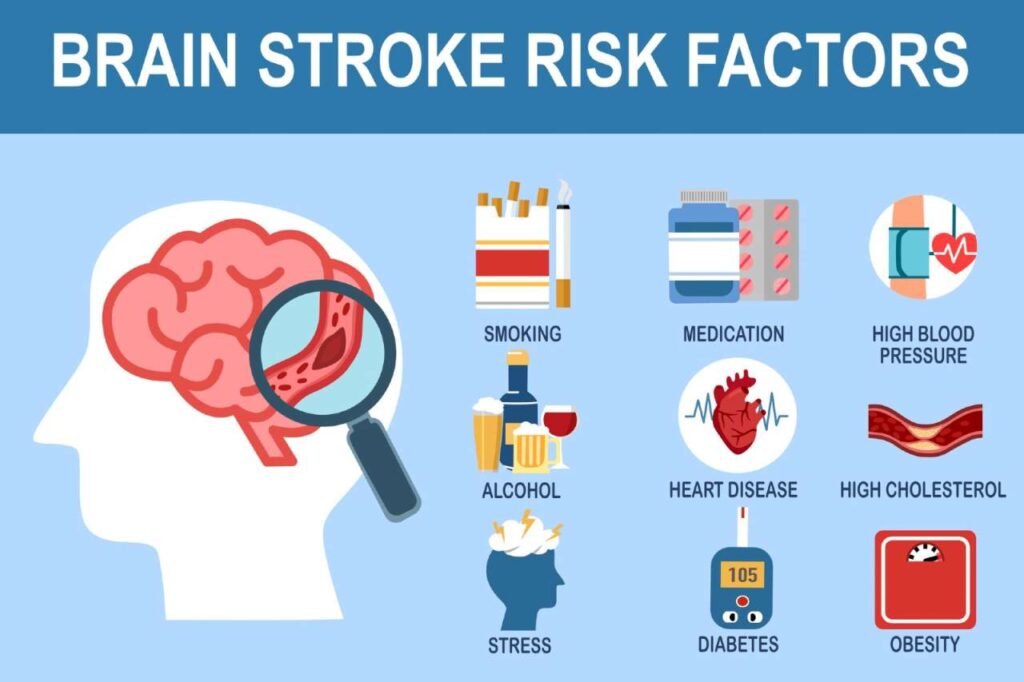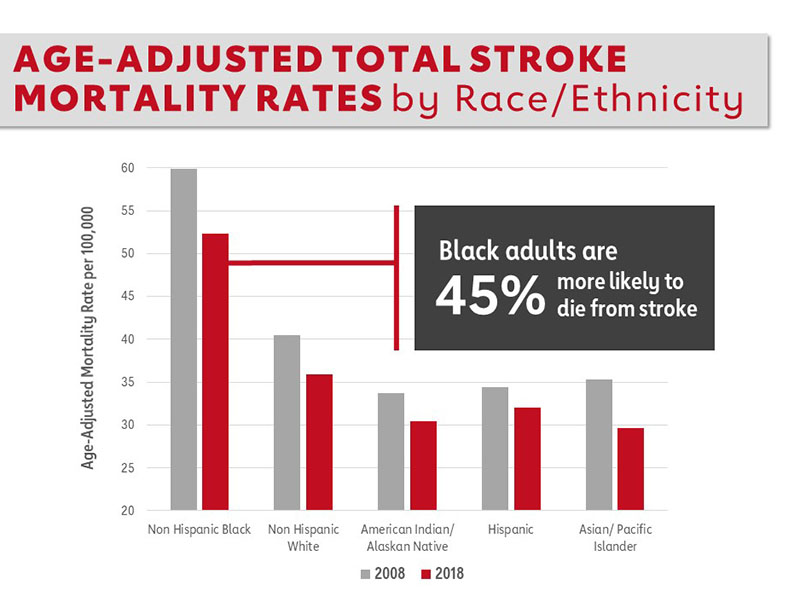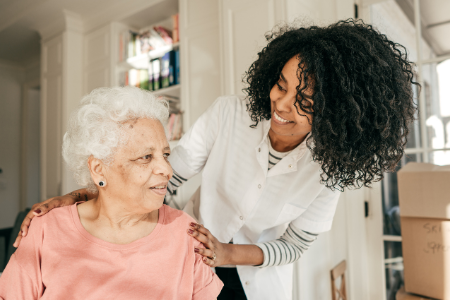stroke
The risk of Black Americans having a first stroke is double that of Caucasians.
stroke
mitigate your risk
The risk of Black Americans having a first stroke is double that of Caucasians.
What is stroke?
A stroke is a “brain attack” that occurs when blood flow to an area of the brain is cut off. This occurs when something blocks blood supply or when a blood vessel in the brain bursts. As a result, brain cells become irreparably damaged or die, leading to lasting brain damage, long-term disability, or even death.
symptoms
- Confusion, trouble speaking or understanding speech
- Paralysis or numbness of face, arm, or leg, especially on one side of the body
- Trouble seeing in one or both eyes
- Sudden, severe headache
- Trouble walking, dizziness, or loss of coordination

Risk Factors
- High blood pressure
- High cholesterol
- Heart disease
- Diabetes
- Being overweight or obese
- Sickle cell disease
- Family history of stroke or heart attack
- Your age. People over the age of 55 have a higher risk of stroke.
- Your race. African Americans have a higher risk of stroke.
- Your sex. Stroke is more common in women and they are more likely than men to die from stroke.
Ways to Prevent
- Control your high blood pressure.
- Lower the amount of cholesterol and saturated fat in your diet.
- Stop smoking and using tobacco.
- Control your diabetes with diet, exercise, and weight management control.
- Eat a diet rich in fresh fruits, vegetables, and whole grains.
- Try to participate in physical activity (walking, jogging, swimming, or bicycling) for about 30 minutes per day.
- Drink alcohol in moderation. Drinking in excess can raise blood pressure levels and increase the level of fat in your blood.
- Don’t stop taking your heart disease, high cholesterol, high blood pressure, or diabetes medication without consulting your primary care provider.

treatment
Emergency treatment for stroke often includes medication and emergency surgery. Treatment may differ depending on the type of stroke you experienced:
- An ischemic stroke occurs when a blood clot blocks an artery. It is the most common kind of stroke.
- A hemorrhagic stroke occurs when a blood vessel in the brain ruptures.
Who is at RisK?
The older you are, the more likely you are to have a stroke. The chance of having a stroke about doubles every 10 years after age 55. Although stroke is common among older adults, many people younger than 65 years also have strokes.
After a stroke
Transient ischemic attack (“mini-stroke”)
If your stroke symptoms go away after a few minutes, you may have had a transient ischemic attack (TIA), also known as a “mini-stroke.”
- There is no way to know in the beginning whether symptoms are from a TIA or from a major type of stroke. Thus, call 911 right away if you feel signs of a stroke or see symptoms in someone around you.
- Because TIAs are brief, many people ignore them. However, a TIA is a warning sign of a future stroke. More than a third of people who have a TIA and don’t get treatment have a major stroke within 1 year.
Recovery
After a stroke, you may still be dealing with problems with movement, breathing, swallowing, balance, and vision.
- Your physician will likely recommend a stroke rehabilitation program
- Speech therapy helps people who have problems producing or understanding speech.
- Physical therapy uses exercises to help you relearn movement and coordination skills you may have lost because of the stroke.
- Occupational therapy focuses on improving daily activities, such as eating, drinking, dressing, bathing, reading, and writing.
While everyone’s recovery and rehabilitation program will be different, your treatment team may include:
- A neurologist
- A physiatrist
- Nurse
- Dietitian
- Physical therapist
- Occupational therapist
- Recreational therapist
- Speech pathologist
- Social worker
- Case manager
- Psychologist or psychiatrist
- Chaplain
STATISTICS FOR PEOPLE OF COLOR

- People of color specific statistics
- The risk of African Americans having a first stroke is double that of Caucasians.
- African Americans have the highest rate of death due to stroke.
- After experiencing a stroke, African-Americans are more likely to become disabled and experience difficulties with daily living and activities.

Learn more about the Stats at GRAAHI's Health Equity Index
Links, Tools, Resources
Websites
Links to resources- assessments, diagnostic tools, more specific information/subtopics
- Stroke risk quiz: https://hf.org/neuro/quiz/stroke.cfm
- Find a stroke support group near you:https://www.stroke.org/en/stroke-support-group-finder
- https://www.stroke.org/en/life-after-stroke/preventing-another-stroke
Grand Rapids/Kent County/Michigan Resources
https://www.healthgrades.com/find-a-doctor/michigan/best-doctors-for-stroke-in-grand-rapids